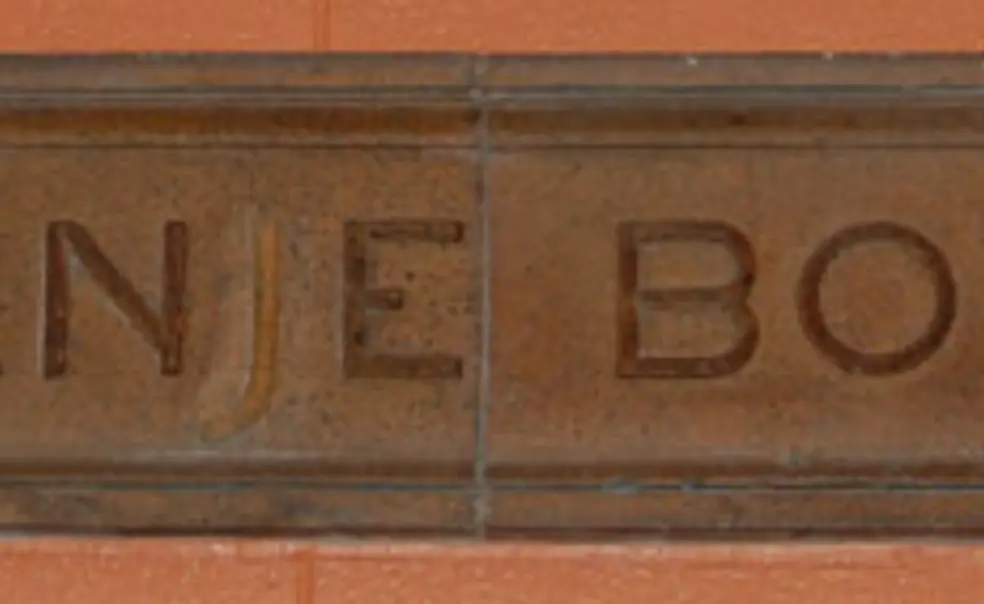'Oranje Boven': A rallying cry resurfaces at Jadwin
Visitors who come to Jadwin Gym for the women’s and men’s basketball season openers Nov. 11 and 12 may notice some new additions. Over the northwest entrance is a mantelpiece from the Osborn Clubhouse, the former athletics field house on Prospect Avenue that housed the Carl Fields Center in recent years and was demolished earlier this year.
On the northeast side is another relic from Osborn: a terra-cotta banner that reads “ORANJE BOVEN” – literally, “orange on top” or “orange above.”

W.R. Leigh's sketch of the Osborn Clubhouse trophy room, from the 1898 book Princeton Old and New: Recollections of Undergraduate Life.
The phrase is a traditional Dutch refrain that dates back to the 1670s, according to the late historian Henry Havard. When Princeton students took up orange and black as the school colors in the 1800s – as a reference to Nassau Hall, King William III, and the House of Orange-Nassau – they appropriated the slogan as well, using it as a rallying cry at sporting events. It earned a place of honor in the Osborn trophy room, built in the early 1890s, and became a popular toast at alumni banquets. According to The Daily Princetonian, there was even a song titled “Oranje Boven” in an early edition of the Carmina Princetonia. In 1935, when a group of alumni donated a portrait of William III, “Oranje Boven” served as the headline for PAW’s cover story.
“Oranje Boven” can still be heard at sporting events, when the Netherlands’ soccer team is on the pitch. But at Princeton, the words are mostly forgotten, relegated to a bygone era when gridiron heroes like Knowlton “Snake” Ames 1890 and Johnny Poe 1895 led the Tigers to the top of the college football world.
Read more: Historic building to be history (PAW, April 28, 2010)
Slide show: Farewell to the clubhouse (PAW, July 6, 2011)













No responses yet